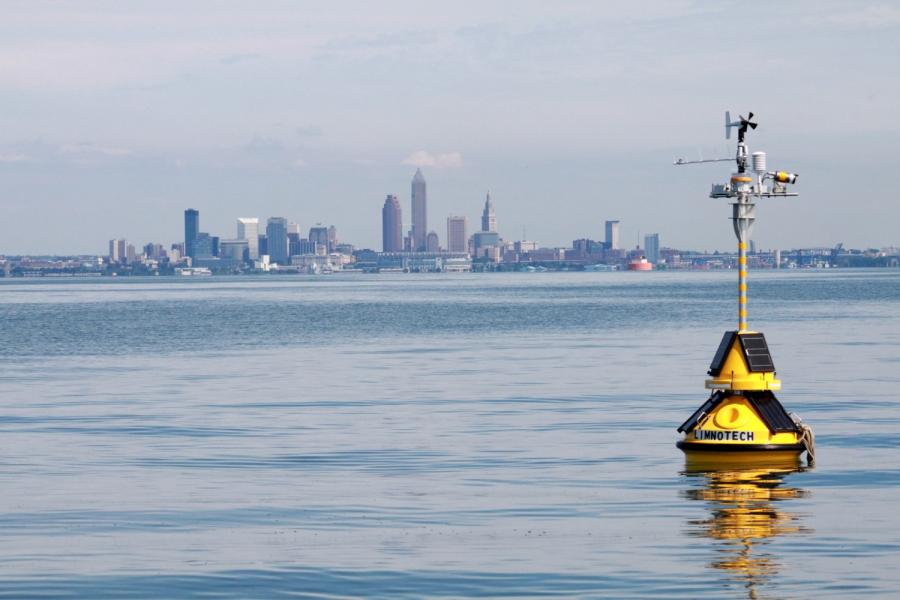Buoys Keep Tabs on Source Water

Across the Great Lakes, buoys are going overboard, taking their annual spring plunge back into the water. This week, Cleveland Water’s two buoys will join 14 others stationed in Lake Erie that keep tabs on water quality and meteorological conditions.
“We can’t be out on the lake collecting data 24 hours a day,” said Cleveland Water Quality Manager Scott Moegling. “That’s what the water quality buoys do. Each is a floating laboratory in the lake.”
Cleveland Water uses data collected from devices called sondes, which are mounted to the buoys, as part of the around-the-clock monitoring of lake conditions. Lake conditions fluctuate year-round, especially in spring and summer. The sonde on each buoy has numerous sensors that extend through the water column to the lake bottom tracking physical and chemical water parameters.
Each buoy sends data every few minutes to an online monitoring system. The data, which can be viewed by the public on the Great Lakes Observing System’s Great Lakes Buoy Portal, is used by staff at Cleveland Water to ensure proper water treatment.
“We look at the massive amount of near real-time data the buoys collect and can see trends. When we see something that is outside the norm, that signals us that we may need to adjust the water treatment process,” Scott said. “Events that are tracked include harmful algal blooms and hypoxic water which has low levels of oxygen and is often referred to as the ‘dead zone’.”
Staff monitor water temperature, pH, turbidity, dissolved oxygen, and other parameters to help anticipate and respond to changes in lake water quality before it is drawn into our four treatment plants. Because each of Cleveland Water’s four intake cribs is 3 to 5 miles offshore, we know four to five hours in advance if the process to treat water will need to be adjusted.
“During summer months, we can experience hypoxic water. This can show itself when buoys indicate that pockets of cold water with low pH and low dissolved oxygen levels are moving toward Cleveland Water intakes. By getting an advanced warning, we can adjust our water treatment,” Scott said.
While a lack of oxygen in the water does not singularly impact water treatment, when water has little or no dissolved oxygen, other minerals that are naturally found in lakebed sediment, such as iron and manganese, can dissolve into the water. These elements, if not properly removed during the water treatment process, can cause discolored water or even unpleasant taste and odor issues.
Over the last decade, water treatment plants have made great progress when it comes to treating hypoxic raw water. Staff have learned that when wind speeds and currents move from the northeast to the southwest, hypoxic water that is 15+ miles offshore can get pushed toward Ohio’s shore and Cleveland Water intakes.
Data and observations being collected by Cleveland Water are being used to develop a Hypoxia Early Warning System for the Great Lakes. This five-year project began in 2016 when the Great Lakes Environmental Research Lab (GLERL) and the Cooperative Institute for Great Lakes Research (CIGLR) received a five-year grant from NOAA’s Center for Sponsored Coastal Ocean Research to develop a model to predict the movement of hypoxic water in Lake Erie’s Central Basin. When finalized, the model will provide drinking water treatment plant managers with an early warning system for hypoxic waters that functions in a similar fashion to meteorological forecasts.
